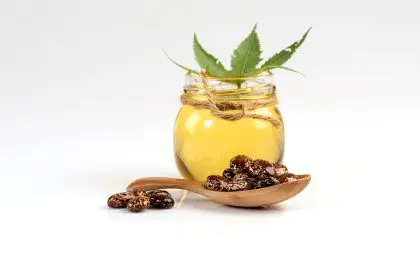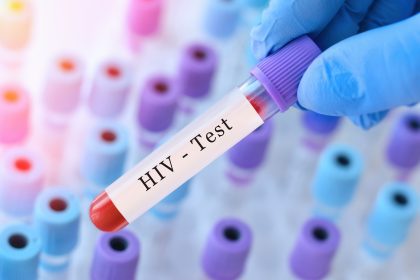The human body contains remarkable self-healing systems, yet certain wellness practices remain underutilized despite their potential benefits. Breast massage, a technique with roots in ancient healing traditions, offers numerous health advantages beyond mere physical pleasure. This practice, once considered primarily intimate, deserves recognition for its legitimate wellness benefits that span physical health, early detection of abnormalities, and enhanced connection between partners.
The ancient practice with modern relevance
Breast massage holds an esteemed place in traditional medicine systems around the world. In Ayurvedic medicine, the practice involves using warmed oils to stimulate tissue, release toxins, and promote overall breast health. Modern research has begun validating these ancient practices, with findings suggesting that regular breast massage can decrease subjective stress levels and even lower heart rate—physiological evidence of its calming effects on the body.
What makes this wellness approach particularly valuable is its accessibility—requiring no specialized equipment or professional training. Partners can learn proper techniques together, creating both health benefits and meaningful connection. As society continues evolving toward more open conversations about physical wellness, breast massage deserves inclusion in discussions about preventative health practices.
6 evidence-based benefits of regular breast massage
The advantages of incorporating breast massage into your wellness routine extend far beyond relaxation. Here are six science-backed benefits worth considering:
- Enhanced early detection capabilities: Regular breast massage familiarizes individuals with their normal breast tissue, making changes or abnormalities more immediately apparent. This heightened awareness serves as a crucial first line of defense, potentially allowing for earlier medical intervention when necessary. Detecting breast abnormalities in early stages dramatically improves treatment outcomes and survival rates.
- Improved lymphatic drainage: The breast area contains numerous lymph nodes responsible for filtering toxins from the body. Gentle massage helps stimulate this lymphatic system, supporting the body’s natural detoxification processes. Proper lymphatic flow reduces swelling, aids immune function, and helps remove cellular waste from breast tissue—benefits that contribute to overall breast health.
- Relief for nursing mothers: For lactating women, breast massage offers particular advantages. The practice can help prevent or resolve clogged milk ducts—painful blockages that can lead to mastitis if left untreated. Regular massage helps ensure milk flows freely through the ducts, potentially increasing milk production while reducing discomfort associated with engorgement.
- Prevention of common skin conditions: The skin covering breast tissue requires proper circulation and care like any other body part. Regular massage improves blood flow to the area, potentially preventing common issues like clogged pores, pimples, and cysts. This improved circulation delivers oxygen and nutrients to breast tissue while helping remove waste products.
- Reduction in physical discomfort: Many individuals experience chest, shoulder, and back pain related to breast tissue—particularly those with larger breasts. Massage techniques targeting the pectoral muscles and surrounding areas can help alleviate this discomfort by releasing tension, improving posture, and enhancing muscle flexibility in the chest wall.
- Strengthened intimate connection: Beyond physical health benefits, breast massage creates opportunities for meaningful connection between partners. The practice requires communication, trust, and focused attention—elements that enhance relationship quality and emotional intimacy. This aspect transforms breast massage from merely physical to a holistic practice supporting both bodily and emotional wellbeing.
Incorporating breast massage into wellness routines
Making breast massage a regular part of your wellness practice requires intentionality and proper technique. Here are practical guidelines for incorporating this healthy habit:
Create a comfortable environment: The setting matters significantly for effective breast massage. Choose a warm, private space where both partners feel completely at ease. Soft lighting, comfortable temperature, and relaxing music help create an atmosphere conducive to both health benefits and intimate connection.
Use appropriate massage mediums: The right oils or lotions enhance both comfort and effectiveness. Natural options like coconut, jojoba, or almond oil provide smooth gliding without irritating sensitive skin. Warming these oils slightly (to body temperature) increases circulation benefits while creating a more pleasant sensation.
Learn proper technique: Effective breast massage involves more than random movements. Beginning with gentle circular motions around the outer breast, gradually work toward the nipple area using varying pressure. Include the often-overlooked breast tissue extending toward the armpit region. Movements should remain gentle but deliberate, with communication about comfort throughout.
Establish regular timing: Consistency provides the greatest health benefits. Scheduling weekly sessions of 10-15 minutes per breast creates an achievable routine without feeling overwhelming. Some individuals prefer incorporating shorter daily sessions, particularly those monitoring for changes or supporting lactation.
Maintain appropriate intentions: While breast massage can certainly enhance intimate experiences, approaching it primarily as a wellness practice changes both the technique and outcomes. Focusing on health benefits creates space for open communication about any detected abnormalities without confusion about intentions.
Making breast wellness a priority
Despite their central role in human nutrition and development, breasts remain surprisingly overlooked in wellness conversations. Changing this perspective requires intentional shifts in how we approach breast health:
Normalize regular examinations: Rather than viewing breast checks as solely medical procedures, reframe them as routine self-care similar to skin examination or dental care. This normalization helps remove hesitation around regular monitoring and discussion of breast health.
Educate about anatomy: Understanding breast anatomy improves both health monitoring and massage effectiveness. Breast tissue extends beyond the visible mound, reaching into the armpit area and around the chest wall. Familiarity with this anatomy helps ensure thorough examination and comprehensive massage coverage.
Recognize universal relevance: Breast health concerns affect people across gender lines. While breast cancer occurs predominantly in women, men can develop the disease as well. Additionally, many people experience breast pain, cysts, or other non-cancerous conditions that benefit from proper care and attention.
Communicate openly with healthcare providers: When incorporating breast massage into wellness routines, discuss this practice with healthcare providers during regular checkups. Medical professionals can offer additional guidance on technique, frequency, and signs that warrant further investigation.
Creating meaningful connection through health practices
Beyond physical benefits, regular breast massage offers couples opportunities to deepen their relationship through shared wellness activities. These intimate yet health-focused interactions foster several important relationship elements:
Enhanced communication: Effective breast massage requires ongoing feedback about pressure, technique, and comfort. This practice in expressing needs and preferences often extends to improved communication in other relationship areas.
Increased body awareness: Partners become more attuned to each other’s physical wellbeing, potentially noticing changes that might otherwise go undetected. This heightened awareness creates a shared responsibility for health monitoring.
Dedicated connection time: In busy lives with numerous distractions, scheduled breast massage sessions ensure regular, focused time together. This intentional connection contrasts sharply with the fragmented attention that characterizes many modern interactions.
Normalized health discussions: Regular breast wellness practices make conversations about health concerns more comfortable and frequent. This openness often extends to other health topics, creating partnerships where wellbeing becomes a shared priority rather than individual concern.
Practical tips for effective breast massage
To maximize both health benefits and partner connection, consider these practical suggestions:
Start with proper hand warming: Cold hands can cause breast tissue to contract, making examination more difficult and sensation less pleasant. Warm hands by rubbing them together before beginning massage.
Use varying pressure levels: Alternating between light feathering touches and deeper tissue manipulation provides comprehensive stimulation. Begin with lighter pressure and gradually increase as muscles relax.
Include the full tissue range: Remember that breast tissue extends beyond the visible mound. Include gentle massage along the chest wall, up toward the collarbone, and into the armpit area for comprehensive coverage.
Maintain open communication: Regular check-ins about comfort, pressure, and sensation ensure both partners remain engaged and comfortable. This dialogue creates space for mentioning any concerns about detected abnormalities.
Combine with other wellness practices: Integrate breast massage with other health-promoting activities like shower self-examinations, application of natural moisturizers, or gentle stretching of chest muscles for enhanced benefits.
By approaching breast massage as a legitimate wellness practice with genuine health benefits, couples can transform what might seem merely sensual into a meaningful component of preventative healthcare. This perspective honors the important role breast tissue plays in human health while creating opportunities for deeper connection between partners.
The ancient wisdom recognizing breast massage as healing now finds support in modern understanding of anatomy and physiology. As with many wellness practices once considered alternative, breast massage deserves integration into comprehensive approaches to physical wellbeing and relationship health.













